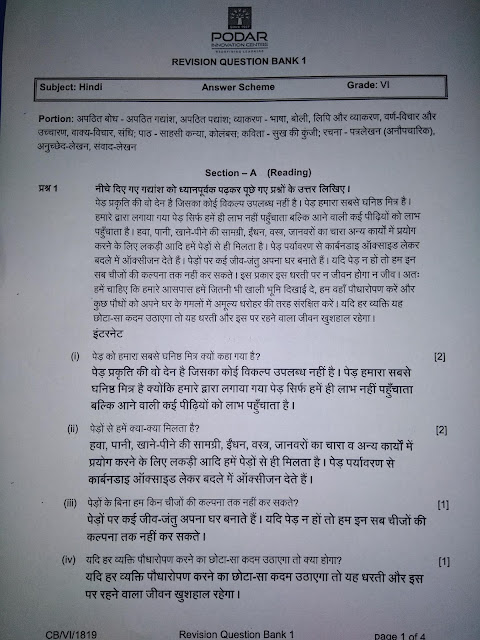EXTRA NOTES..SCIENCE OF CHANGE
1: How is metal rim fixed on a wooden wheel of a cart? How
is the changes made in that metal?
Ans:
Metal
rim is made slightly smaller than the wooden wheel. On heating rim expands and
fits into wheel. Cold water is then poured over rim, which contracts and fits
tightly onto the wheel.
2. How the iron blade is
fixed into a wooden handle in tools used to dig the soil?
Ans:
Iron
blade of tools has a ring in which the wooden handle is fixed. Normally the
ring is slightly smaller in size than wooden handle. To fix handle ring is
heated and it expands. Now handle easily fits into the ring. When ring cools
down it contracts and fits into handle.
Q3: Conversion of water into water vapour is a
reversible change. Why?
Ans:
Conversion
of water into water vapour is a reversible change because water vapour when
cooled gets converted into liquid water again.
4.
Is the change where you draw a picture on a drawing
sheet, reversible?
Answer
If
we draw a picture using a pencil sketch, then the change is reversible.
But,
if the picture is drawn using an oil color, sketch, watercolors or pen, then
the change is irreversible.
6.
For a fractured bone, Plaster of Paris bandage is
preferred. Why? State whether the change is reversible or irreversible.
Answer
Plaster
of Paris bandage is preferred because it becomes hard on drying to keep the
bone immobilized which help in recovering at a faster rate. Since there is a
change of state, a new product is formed which cannot be brought back to its
original form. So the change is irreversible.
7.
If you leave a piece of iron outside for a long
time it turns brown leading to the formation of rust. Is the change
reversible or irreversible?
Answer
The
formation of rust is completely a new substance due to the reaction of oxygen
with the iron, which is termed to be a chemical change. Therefore, it not
possible to avoid the rust formation and the change is irreversible.
8.
State a few examples for slow changes.
Answer
i)
Germination of seed
ii)
Rusting of iron
iii)
Curdling of milk
9.
State a few examples for fast changes.
Answer
i)
Burning of candle
ii)
Burning of paper
iii)
Inflating tire
10.
State any two examples of reversible changes.
Answer
i)
Melting of ice
ii)
Melting of candle wax
11.
State any two examples of irreversible changes.
Answer
i)
The ingredients like flour, egg and sugar is converted to cake
ii)
Cooking of food
iii)
Burning of fuel
Deforestation is an irreversible change.
Why?
Answer
Once
the trees are cut, the same tree cannot be planted. So deforestation is
considered as an irreversible change.
13.The explosion of a cracker is a
chemical change. Explain.
Answer
Answer
The
explosive reactants of a cracker are transformed into gaseous products along
with heat and light. Thus, it cannot be brought back to the original form.
Hence, it is a chemical change.
14.
Blacksmith heats the metal rim to fix it on the
cartwheel. Explain.
Answer
The
metal rim will be smaller than its usual size. On heating, the metal rim
expands and fits onto the wheel. Similarly, on cooling, the metal rim contracts
and fits tightly to the wheel.
15.
Define slow changes and fast changes. State a few
examples.
Answer
Slow changes:
The
changes, which take place slowly over a period is called slow changes.
Ex-Germination
of seed, formation of day and night and Rusting of iron
Fast changes:
The
changes which take place quickly is called fast changes.
Ex:
Burning of paper, Melting of a candle and blowing of balloons.
16.
Classify the following as slow or fast changes:
i) Growth of a plant
ii) Formation of clouds
iii) Formation of sugar solution
iv) Inflation of tire
v) Melting of chocolate
Answer
i)
Slow change
ii)
Slow change
iii)
Fast change
iv)
Fast change
v)
Fast change
17.
What are the changes taking place in our body?
Answer
a)
The height of the person increases
b)
Nails grow
c)
The weight of the person increase
d)
Our hair grows.
18.
Formation of clouds is usually a physical change. Justify
the statement.
Answer
Answer
The
formation of clouds is a physical change because there is a phase
transformation cycle of natural water from liquid to gas and then, gas to
liquid. Hence, the property of water never changes.
19.
Explain the physical changes and chemical changes with an
example.
Answer
Physical change:
Physical change:
i)
The changes where the physical property of the substance varies without any formation
of new products.
ii)
These changes are reversible and the products are identical to the reactants.
Ex:
Melting of ice, during this change the water changes from its solid form to
liquid form, melting of wax.
Chemical change:
i)
The changes where the chemical property of the substance varies with the
formation of new products.
ii)
These changes are irreversible and the products are not identical to the
reactants.
Ex:
Formation of curd from milk, rusting of iron.
20.What will be the change when sugar is
heated?
Answer
When
sugar is continuously heated, a black powdery substance is formed which is
called charcoal. Since a new product is formed, it is termed to be a chemical
change.
21.Give some examples of changes, which
take place on their own.
Answer
Answer
The changes that take place on their own
are
i) Shedding of leaves
i) Shedding of leaves
ii)
Ripening of fruits
iii)
Growth of the body
iv)
Blooming of flowers
NAME
OF CHANGE AND TYPES OF CHANGE

